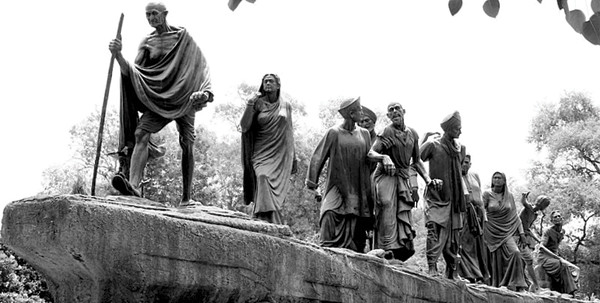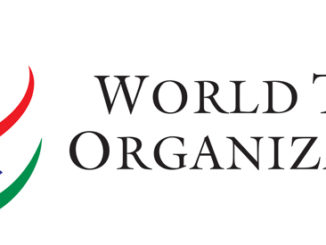
The Non-Cooperation Movement was pitched in under leadership of Mahatma Gandhi and the Indian National Congress from September 1920 to February 1922, marking a new awakening in the Indian Independence Movement. After a series of events including the Jallianwala Bagh Massacre, Gandhiji realised that there was no prospect of getting any fair treatment at the hands of British, so he planned to withdraw the nation’s co-operation from the British Government, thus launching the Non-Cooperation Movement and thereby marring the administrative set up of the country. This movement was a great success as it got massive encouragement to millions of Indians. This movement almost shook the British authorities.
Simon Commission
The Non-cooperation movement failed. Therefore there was a lull in political activities. The Simon Commission was sent to India in 1927 by the British Government to suggest further reforms in the structure of Indian Government. The Commission did not include any Indian member and the Government showed no intention of accepting the demand for Swaraj. Therefore, it sparked a wave of protests all over the country and the Congress as well as the Muslim League gave a call to boycott it under the leadership of Lala Lajpat Rai. The crowds were lathi charged and Lala Lajpat Rai, also called Sher-e-Punjab (Lion of Punjab) died of the blows received in an agitation.
Civil Disobedience Movement
Mahatma Gandhi led the Civil Disobedience Movement that was launched in the Congress Session of December 1929. The aim of this movement was a complete disobedience of the orders of the British Government. During this movement it was decided that India would celebrate 26th January as Independence Day all over the country. On 26th January 1930, meetings were held all over the country and the Congress tricolour was hoisted. The British Government tried to repress the movement and resorted to brutal firing, killing hundreds of people. Thousands were arrested along with Gandhiji and Jawaharlal Nehru. But the movement spread to all the four corners of the country Following this, Round Table Conferences were arranged by the British and Gandhiji attended the second Round Table Conference at London. But nothing came out of the conference and the Civil Disobedience Movement was revived.
During this time, Bhagat Singh, Sukhdev and Rajguru were arrested on the charges of throwing a bomb in the Central Assembly Hall (which is now Lok Sabha) in Delhi, to demonstrate against the autocratic alien rule. They were hanged to death on March 23, 1931.
Quit India Movement
In August 1942, Gandhiji started the ‘Quit India Movement’ and decided to launch a mass civil disobedience movement ‘Do or Die’ call to force the British to leave India. The movement was followed, nonetheless, by large-scale violence directed at railway stations, telegraph offices, government buildings, and other emblems and institutions of colonial rule. There were widespread acts of sabotage, and the government held Gandhi responsible for these acts of violence, suggesting that they were a deliberate act of Congress policy. However, all the prominent leaders were arrested, the Congress was banned and the police and army were brought out to suppress the movement.
Meanwhile, Netaji Subhash Chandra Bose, who stealthily ran away from the British detention in Calcutta, reached foreign lands and organized the Indian National Army
(INA) to overthrow the British from India.
The Second World War broke out in September of 1939 and without consulting the Indian leaders, India was declared a warring state (on behalf of the British) by the Governor General. Subhash Chandra Bose, with the help of Japan, preceded fighting the British forces and not only freed Andaman and Nicobar Islands from the Britishers but also entered the north-eastern border of India. But in 1945 Japan was defeated and Netaji proceeded from Japan through an aeroplane to a place of safety but met with an accident and it was given out that he died in that air-crash itself.
“Give me blood and I shall give you freedom” – was one of the most popular statements made by him, where he urges the people of India to join him in his freedom movement.
Partition of India and Pakistan
 At the conclusion of the Second World War, the Labour Party, under Prime Minister Clement Richard Attlee, came to power in Britain. The Labour Party was largely sympathetic towards Indian people for freedom. A Cabinet Mission was sent to India in March 1946, which after a careful study of the Indian political scenario, proposed the formation of an interim Government and convening of a Constituent Assembly comprising members elected by the provincial legislatures and nominees of the Indian states. An interim Government was formed headed by Jawaharlal Nehru. However, the Muslim League refused to participate in the deliberations of the Constituent Assembly and pressed for the separate state for Pakistan. Lord Mountbatten, the Viceroy of India, presented a plan for the division of India into India and Pakistan, and the Indian leaders had no choice but to accept the division, as the Muslim League was adamant.
At the conclusion of the Second World War, the Labour Party, under Prime Minister Clement Richard Attlee, came to power in Britain. The Labour Party was largely sympathetic towards Indian people for freedom. A Cabinet Mission was sent to India in March 1946, which after a careful study of the Indian political scenario, proposed the formation of an interim Government and convening of a Constituent Assembly comprising members elected by the provincial legislatures and nominees of the Indian states. An interim Government was formed headed by Jawaharlal Nehru. However, the Muslim League refused to participate in the deliberations of the Constituent Assembly and pressed for the separate state for Pakistan. Lord Mountbatten, the Viceroy of India, presented a plan for the division of India into India and Pakistan, and the Indian leaders had no choice but to accept the division, as the Muslim League was adamant.
Thus, India became free at the stroke of midnight, on August 14, 1947. (Since then, every year India celebrates its Independence Day on 15th August). Jawaharlal Nehru became the first Prime Minster of free India and continued his term till 1964. Giving voice to the sentiments of the nation, Prime Minister, Pandit Jawaharlal Nehru said,
Long years ago we made a tryst with destiny, and now the time comes when we will redeem our pledge, not wholly or in full measure, but very substantially. At the stroke of the midnight hour, when the world sleeps, India will awake to life and freedom. A moment comes, which comes but rarely in history, when we step out from the old to the new, when an age ends and when the soul of a nation, long suppressed, finds utterance…. We end today a period of ill fortune, and India discovers herself again.
Earlier, a Constituent Assembly was formed in July 1946, to frame the Constitution of India and Dr. Rajendra Prasad was elected its President. The Constitution of India which was adopted by the Constituent Assembly on 26th November 1949. On January 26, 1950, the Constitution came into force and Dr. Rajendra Prasad was elected the first President of India.





Be the first to comment